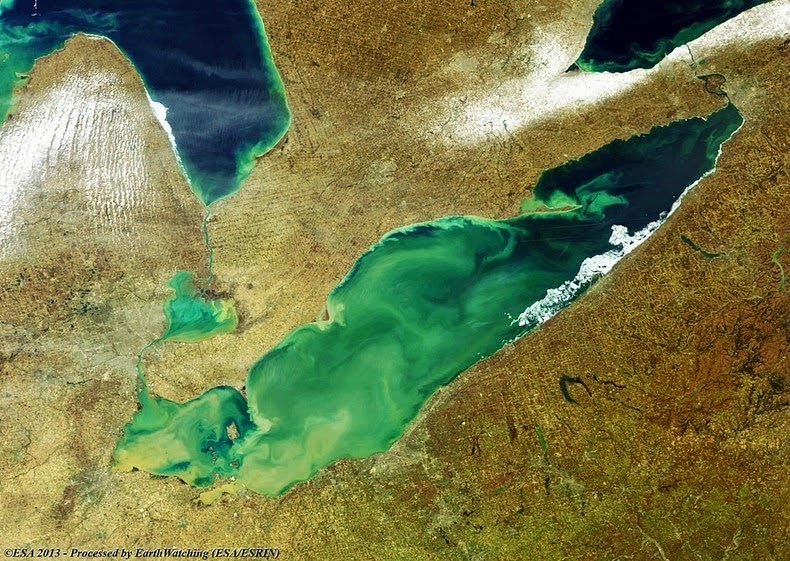Lake Erie is the fourth largest
of the five Great Lakes in North America, and the 11th largest lake in the
world, in terms of surface area. Lake Erie, aside from providing drinking water
to the neighboring population, is a source for many waterborne commerce,
navigation, and manufacturing. Outflow from Lake Erie spins the immense
turbines at Niagara Falls providing hydroelectric power to Canada and the U.S.
The intensive industrial development along the shores of the lake has been
devastating the lake’s environment for decades with lot of issues like;
overfishing, pollution and more recently fast algae blooms.
During the summer months, Lake
Erie along with the rest of the five Great Lakes smothers under massive swaths
of green algae, often spread over thousands of square kilometers in size. The
algae flourish by feeding on excess nutrients in the form of phosphorous in the
water. The phosphorus comes from sewage treatment plants and fertilizer used in
farms that runoff along with rain water and enters into streams and rivers ultimately
winding up in Lake Erie. Blue-green algae also prosper on light. Lake Erie,
being the shallowest of the Great Lakes, particularly at its west end, is further
susceptible to algae than its deeper cousins, which do not have the same
penetration of sunlight. The algae float on the surface and proliferate
rapidly, and when they die, they sink to the bottom of the lake, where they falloff
and absorb the oxygen in the water creating dead zones where most aquatic
animals cannot live. Hundreds of thousands of dead fish washed up on Erie’s
shores during 2011 when the lake saw the biggest algae bloom in recorded
history. The blue-green algae occupied Lake Erie covering as much as one/sixth
of the surface, ranging from Toledo, Ohio to beyond Cleveland and along the
Ontario shore. It stretched over 20 KM from the shores, and in the central
basin it was observed at a depth of at least 60 feet.
Not all types of algae are
destructive, but the bloom is primarily microcytic aeruginosa, algae that is
toxic to mammals. Microcystis aeruginosa produces a liver toxin, microcystin, that
commonly kills dogs swimming in infected water and causes skin irritation,
respiratory difficulty and gastrointestinal distress in humans. However; algae
blooms were common in the lake’s shallow western basin in the 1950’s and 60’s.
Phosphorus from farms, sewage, and industry fertilized the waters so that massive
algae blooms developed year after year. The blooms subsided a bit starting in
the 1970,s when regulations and developments in agriculture and sewage
treatment restricted the amount of phosphorus that reached the lake. But the
problem has resurfaced in the recent years.Source: Amusing Planet


























